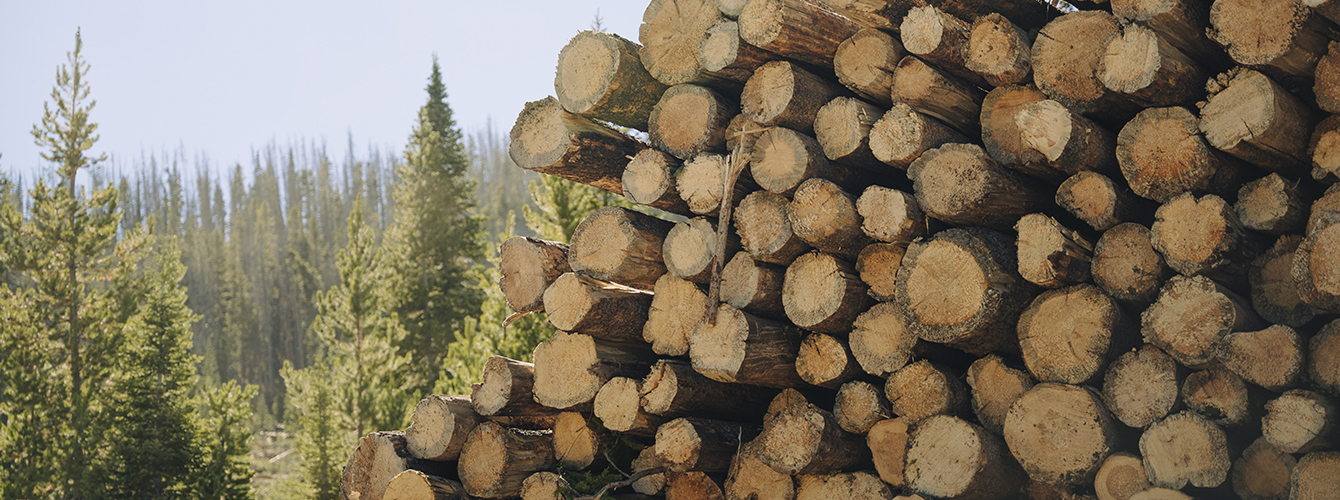
The idea of cutting down trees to support a healthy forest might seem counterintuitive at first. But creating a thriving wood products market is an essential part of caring for Colorado forests.
Stewardship is an ongoing process that involves the sustainable use of resources to foster growth and productivity for the future. This includes active management actions aligned with specific objectives that support forests. Removing trees is an important aspect of management goals across the state, including reducing tree competition and promoting a diversity of tree species and ages. It is also crucial for wildfire mitigation in the wildland-urban interface.
It doesn’t end there—trees are given a second life after being cut down. Wood can be turned into a variety of forest products, such as lumber, construction materials, paper products, packaging, energy sources, fences, bridges and much more.
Benefits of Forest Products
There are significant environmental benefits to using forest products. As trees grow, they capture carbon from the atmosphere, which is then stored in wood. Compared to constructing buildings and homes with products that are more dependent on fossil fuels, wood is an emission-saving choice.
But that’s not all—selling this wood can support local economies, which generates income to help offset forest management costs for ongoing stewardship efforts. For example, a landowner can have trees removed from their property to reduce wildfire risk, then sell this wood to offset the overall project expense. Selling locally produced wood products can reduce the associated costs for wildfire mitigation efforts in the wildland-urban interface across Colorado.
The Colorado State Forest Service has several programs that oversee the use of wood material, involving partnerships with state and federal agencies, local landowners and private contractors.
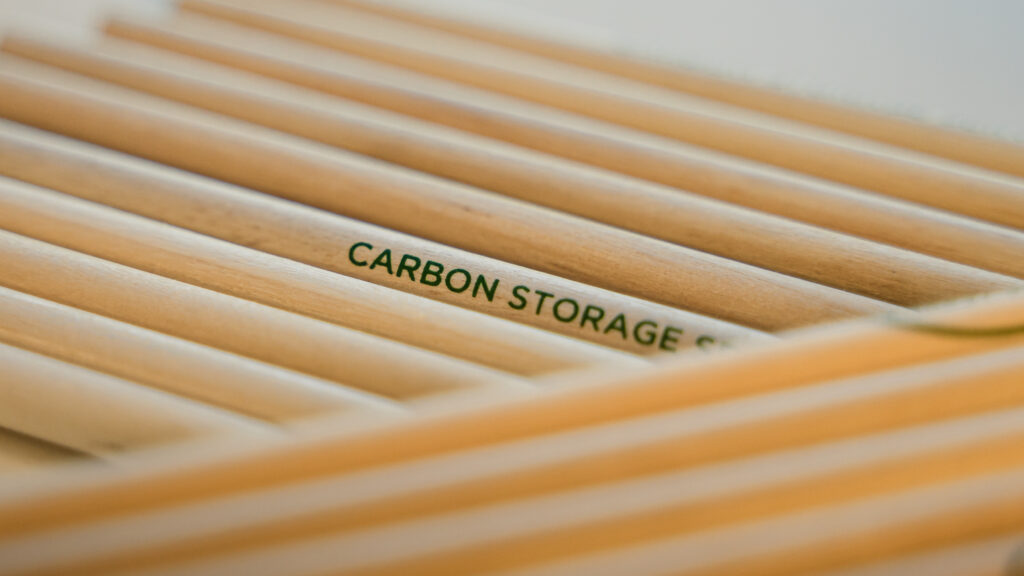
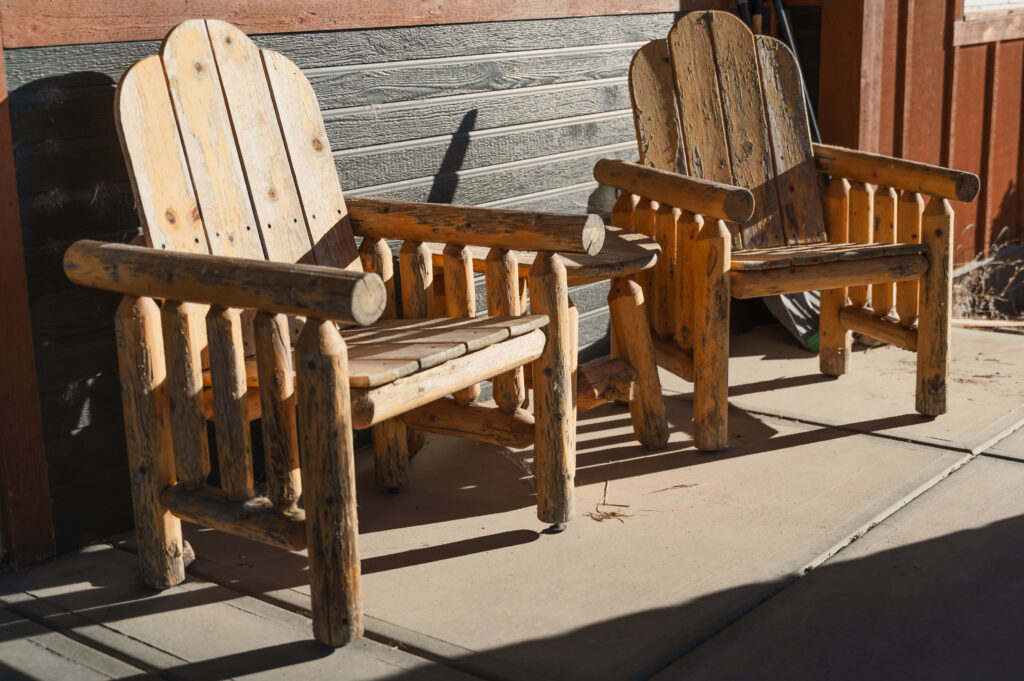
Buy Colorado Wood
There is still an ongoing challenge throughout the West to raise awareness of the availability of forest products to find profitable uses for woody material, or biomass, which can support project funding and local economies. Despite the products available in local forests, most wood is shipped here.
“Up to 90% of consumer spending on wood products every year goes to products grown, manufactured and transported to Colorado,” says Tim Reader, wood utilization & marketing program specialist with the CSFS.
In response, the Colorado State Forest Service has developed the Colorado Forest Products™ Database (CFP). This list features Colorado companies that offer products made with at least 50 percent wood derived from management activities in Colorado forests. Explore the database to find business near you.
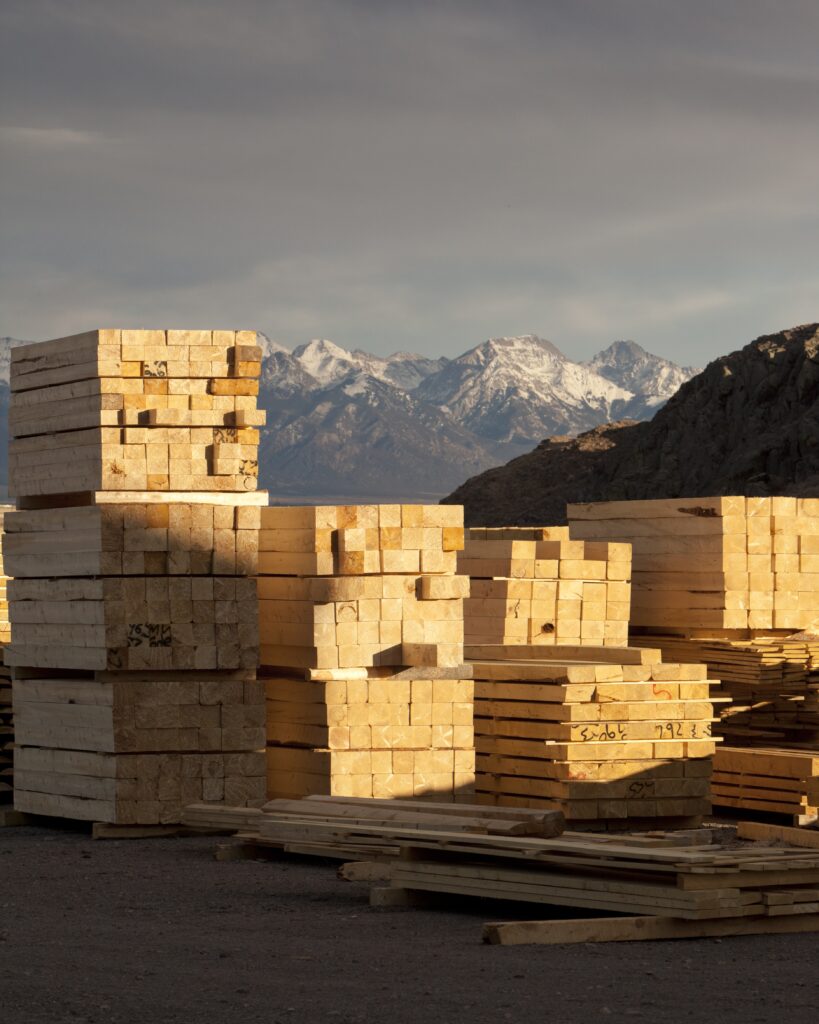
Supporting Wood Utilization
The Colorado Wood Utilization and Marketing Program (CoWood) strives to improve the quality of life for Colorado’s forest products producers, consumers and forest users by being Colorado’s leading innovator for forest products information, service, education and outreach.
CoWood services:
- Providing access to forest products harvesting, manufacturing and market research
- Delivering technical, business and financial assistance
- Offering wood products training and professional development opportunities
- Providing wood products utilization expertise
CoWood projects and community efforts:
- The Wood to Energy Program, where wood products support a clean energy economy
- The Colorado Forest Products™ program, which enhances the marketing of wood products harvested from Colorado’s forestlands
- Colorado’s Wildfire Risk Mitigation Loan Fund, which provides lending to forest businesses who are improving Colorado’s forests
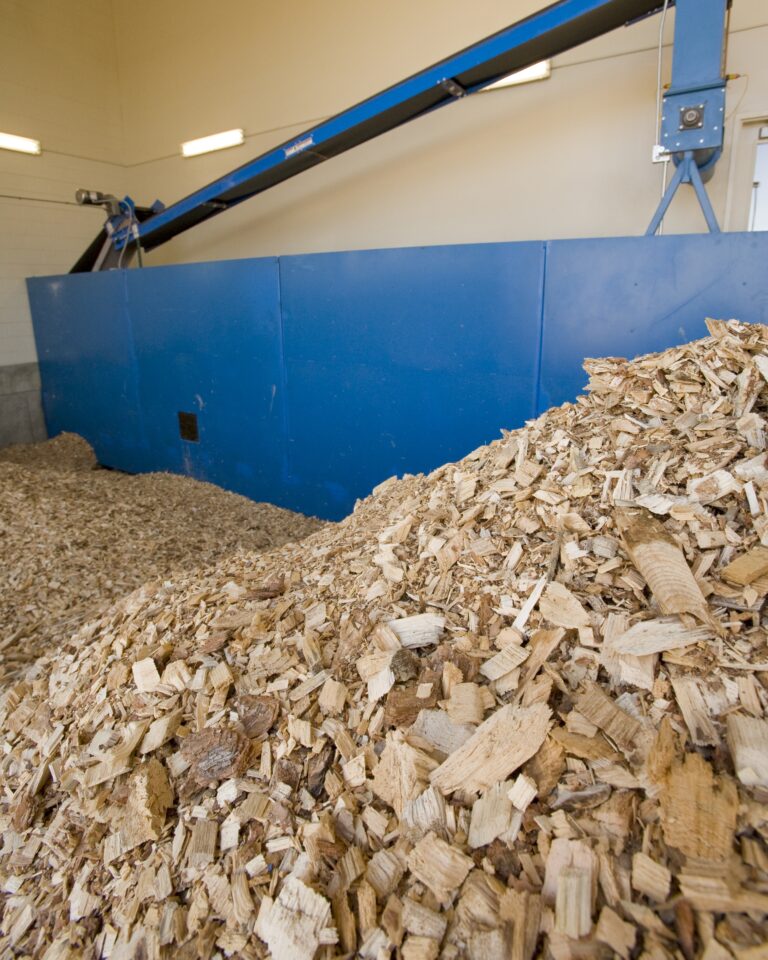
Forest Ag Program
Landowners in Colorado are eligible to sell their timber through the Colorado Forest Agriculture Classification Program, also known as the Forest Ag Program, which offers similar tax valuation as that of traditional agricultural lands. Forest landowners voluntarily participate in the Forest Ag Program and must fulfill certain requirements for initial eligibility.
The Forest Ag Program promotes forest health and stewardship, wood products utilization and sustainable forest management. Benefits include the generation of forest products, more resilient forests that are better able to withstand insect and disease activity, reduced threat of catastrophic wildfire and reduced fragmentation of forested lands.
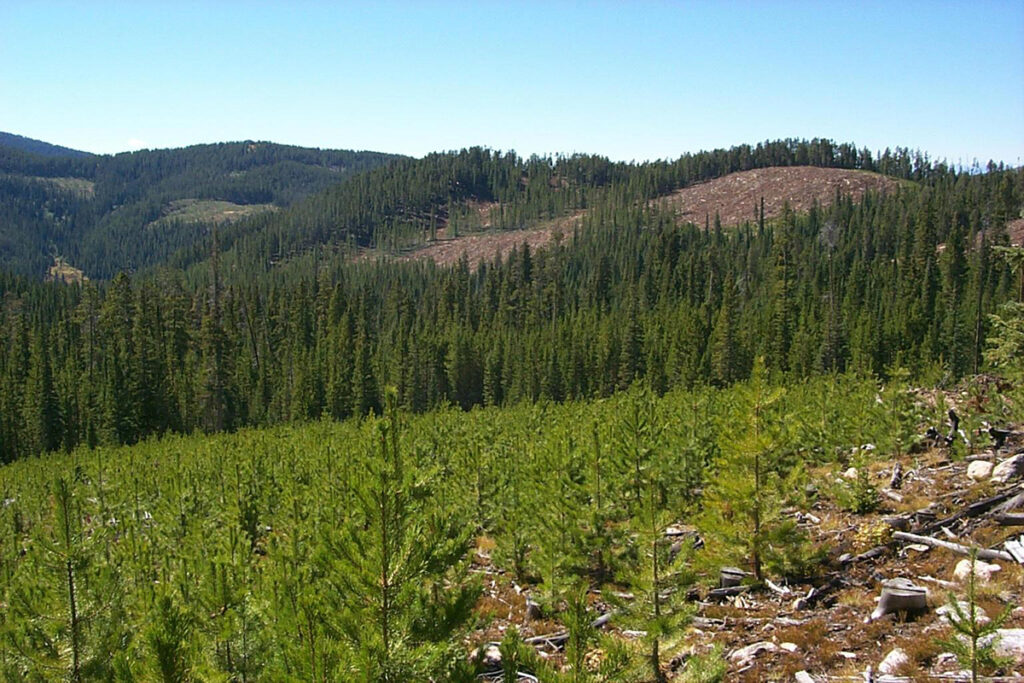
Innovation
Wood is often imperfect, small-diameter or misshapen, which can be limiting for some traditional wood products. Fortunately, recent innovations use this biomass in unique ways.
One example is Golden West Pine Mills in Ault, Colorado. This small, family-owned business was the Colorado State Forest Service’s 2022 Partner of the Year for adopting an innovative manufacturing process: Edge-Glue-And-Rip (EGAR). This process produces strong, high-quality mass timber products made from small-diameter timber.
Mass timber, or engineered wood, is made by gluing, nailing or dowelling smaller timber into large pre-manufactured, multilayered, solid wood panels that can be used in flooring and walls. One type is known as cross-laminated timber (CLT), which enables mass timber construction to replace traditional construction materials in mid-to-high-rise buildings, due to its strength. This process makes use of small-diameter timber that may otherwise be left on project sites in favor of more traditionally economical large-diameter timber.
Colorado forest products are readily available and play an important role in supporting local economies and landowners. With increased awareness and innovation, they will continue to provide sustainable materials and funding for forest stewardship into the future.
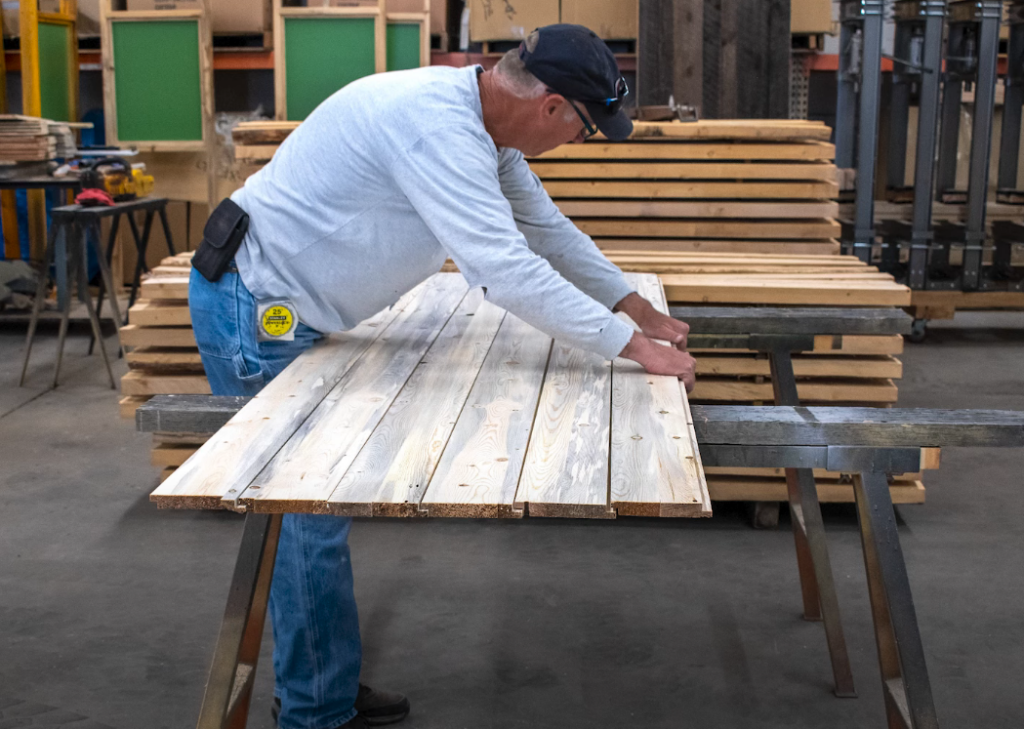
Key Terms
- Active forest management – Actions taken to promote a healthy and resilient forest, including harvesting or planting trees
- Biotic material – Organic matter
- Forest products – Woody material that can be used for lumber, construction materials, paper products, packaging, energy sources, fences, bridges and more
- Forest stewardship – Sustainable use of forestry resources to support growth and productivity for the future
- Mass timber – Pre-manufactured, multilayered, solid wood panels that can be used in flooring and walls made by gluing, nailing, or dowelling smaller timber together; engineered wood
- Timber – Unprocessed wood, such as felled trees that still have their bark
- Woody biomass – Plant matter from trees or shrubs that can be used for wood products or converted to fuel; a renewable energy source
- Wood products – Material derived from trees, including lumber, construction materials and paper products
- Wildfire mitigation – On-the-ground treatments (including vegetation management and home hardening) to reduce the chance of a wildfire causing damage to a given area
- Wildland-urban interface – Areas where human development is close to, or within, natural terrain and flammable vegetation

